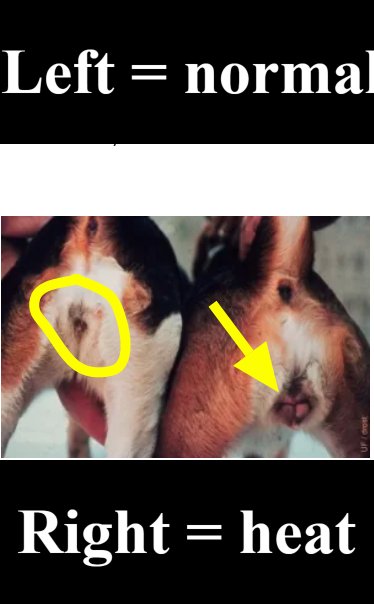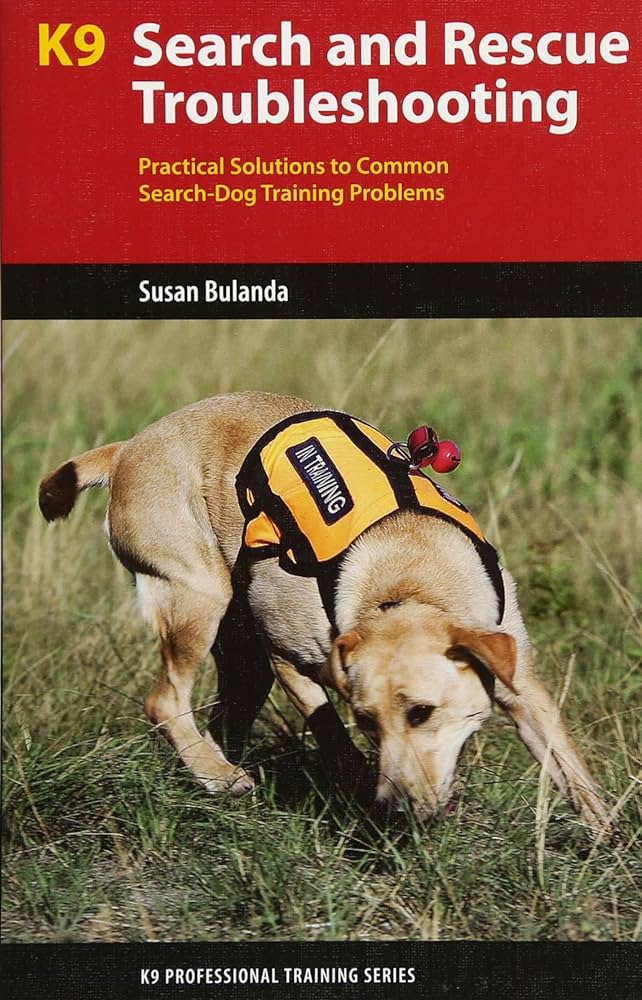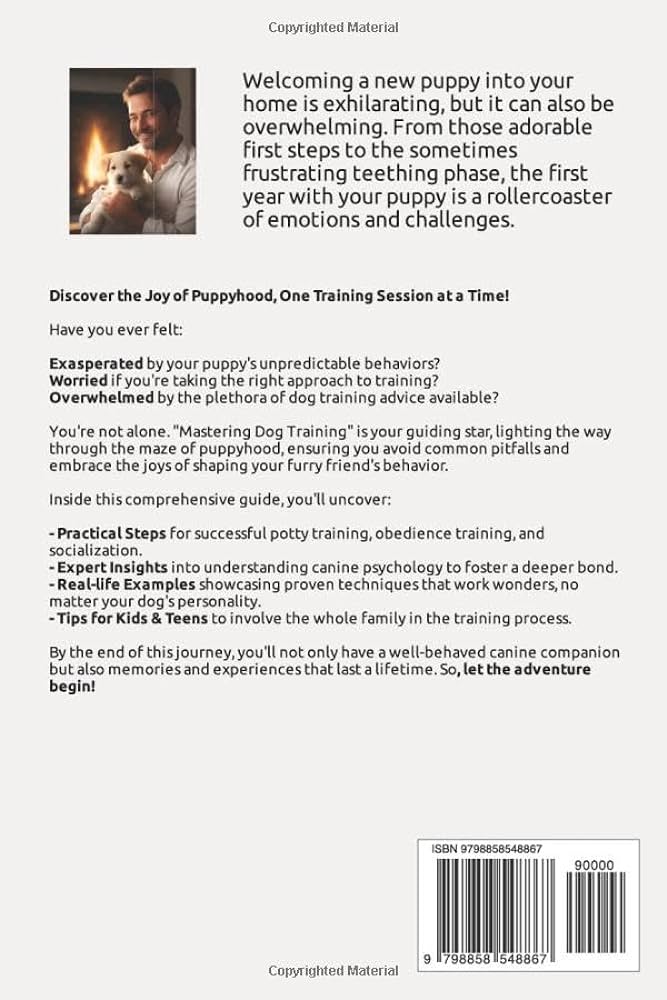Does a Dog’s Behaviour Change in Season? Find Out Now
Last Updated on April 29, 2024 by Petpalace54
Yes, a dog’s behavior can change when in season due to hormonal changes. Female dogs may exhibit increased restlessness, pacing, & attention-seeking behaviors.
Does a Dog’s Behaviour Change in Season? Generally, they may become more aggressive, have mood swings, & urinate more frequently. This is all due to the changes in hormones during their heat cycle. The heat cycle is a normal part of a female dog’s reproductive system, but it can also cause some behavioral changes that may be challenging for pet owners to manage.
However, it’s important to understand the signs and symptoms of a dog in heat to provide appropriate care and attention to your pet during this time. We’ll discuss the effects of a dog’s heat cycle on their behavior & provide tips for managing these changes.
Table of Contents
- 1 Does a Dog’s Behaviour Change in Season? Understanding A Dog’s Heat Cycle
- 2 Behavioral Changes During A Dog’s Heat Cycle
- 3 Managing A Dog During Heat
- 4 Health Concerns During A Dog’s Heat Cycle
- 5 Behavioral Changes In Dogs With Seasonal Changes
- 6 Tips For Managing Dogs During Seasonal Changes
- 7 Frequently Asked Questions For Does a Dog’s Behaviour Change in Season?
- 8 Conclusion
Does a Dog’s Behaviour Change in Season? Understanding A Dog’s Heat Cycle
Female dogs can exhibit different behaviors when in heat, the period in which they are ready to mate. Hormonal changes during this time can make them more restless, seek more attention and even act more aggressively. It is common for female dogs to urinate more frequently to let males know of their whereabouts.
Understanding a Dog’s Heat Cycle
A dog’s heat cycle is a natural process that all female dogs go through, starting as early as six months of age. It is a reproductive cycle that happens when the dog’s body prepares for mating and pregnancy. During this time, there are noticeable changes in behavior, and as a dog owner, it’s essential to understand & manage the changes.
What is a Dog’s Heat Cycle?
A dog’s heat cycle is a hormonal process that prepares the body for mating & pregnancy. Generally, dogs’ heat cycles occur twice yearly, though the frequency and duration may vary depending on a dog’s breed and age. Female dogs bleed or discharge blood-tinged fluids for about 7-14 days during their heat cycle.
How Long does a Dog’s Heat Cycle Last?
The heat cycle is divided into four parts: Proestrus, Estrus, Diestrus, & Anestrus. The cycle may last for approximately 21 days, but it can range from 14 days to 28 days.
- Proestrus – This is the first stage of the heat cycle, lasting 4 to 20 days. During this period, female dogs experience swelling of the vulva, discharge of blood-tinged fluids, and behavioral changes, but they are not receptive to male dogs.
- Estrus – This is the second stage of the heat cycle, lasting for about 4-13 days. During this period, female dogs become receptive to male dogs and can become pregnant.
- Diestrus – This is the third stage of the heat cycle, lasting about 60 days in pregnant dogs and around 90 to 150 days in non-pregnant dogs.
- Anestrus – This is the fourth and final stage, lasting around 4 to 5 months. During this stage, no hormonal activity is present, and the dog is not receptive to mating.
What are the Different Stages of a Dog’s Heat Cycle?
Understanding the different stages of the heat cycle is crucial for dog owners to manage their dogs appropriately. In the proestrus stage, there may be noticeable changes in the dog’s behavior, including restlessness, increased urination, and anxiousness. During the estrus stage, dogs become receptive to male dogs and may exhibit behaviors such as mounting and marking. In the diestrus stage, dogs may experience mood swings & display irritability, fatigue, and changes in appetite.
What Behavioral Changes Occur During Each Stage?
During the proestrus stage, dogs may experience changes in their behavior, such as increased restlessness, agitation, and attention-seeking. They may show signs of anxiety and may urinate more frequently than usual. During the estrus stage, dogs may become more vocal and may exhibit dominance, marking, and mounting behaviors. In the diestrus stage, dogs may become moody, irritable & may display changes in appetite, such as decreased food intake or overeating. It’s vital to observe and manage changes in behavior during each stage to ensure the dog’s physical & mental well-being.
In conclusion, understanding a dog’s heat cycle and its behavioral changes during each stage is essential for dog owners to manage their dog’s well-being. By observing & addressing behavior changes during each stage, dog owners can help their dogs through this natural process.

Credit: www.adaptil.co.uk
Behavioral Changes During A Dog’s Heat Cycle
During a female dog’s heat cycle, her behavior can change due to hormonal imbalances. Some common changes include increased restlessness, attention-seeking behavior, and mood swings such as aggression or agitation. Female dogs may also urinate more frequently & attempt to mount other dogs.
Behavioral Changes During a Dog’s Heat Cycle
Dogs, like humans, undergo hormonal changes at certain times in their life. During a female dog’s heat cycle, which occurs every six to twelve months, significant behavioral changes can occur. These changes are driven by hormonal shifts and can affect both male & female dogs.
Behavioral changes in female dogs during heat
When a female dog is in heat, she may display a range of behaviors that are not typical in her personality. Such behavior is mainly due to hormonal imbalances and may include restlessness, increased attention-seeking, & increased anxiety. Female dogs might also be more vocal and may signal male dogs to come near her. She may try to escape and will be more inclined to mount other animals, toys, or humans. Female dogs may also have changes in their eating habits & may become more moody.
Behavioral changes in male dogs during heat
Male dogs, unlike female dogs, do not experience heat cycles. However, they can display behavioral changes when around female dogs in heat. They may become more restless, anxious, & sometimes aggressive. Male dogs’ behavior can be better explained by their desire to mate and become more territorial during this time. Some male dogs may become more vocal and may scent mark their territories more frequently. It’s essential to monitor your male dog’s behavior during this time, as it can become harmful to both the dog & other animals/people around it.
In conclusion, it is clear that heat cycles in dogs can cause significant behavioral changes. As a pet owner, being aware of these changes can help you take care of your dog better. Routine vet visits, maintaining a positive environment, & keeping dogs separated when necessary can help you manage your dog during their heat cycle better.
Managing A Dog During Heat
During their heat cycle, female dogs may exhibit different behaviors due to hormonal changes. Some common changes include increased restlessness, attention-seeking behavior, and mood swings. It is important to manage your dog carefully during this time to ensure their safety & prevent unwanted mating.
This involves understanding how your dog behaves and taking necessary precautions to ensure their health and safety. In this post, we will discuss how to manage a dog during heat, with a focus on the following subheadings: How to manage a female dog during heat, How to manage a male dog during heat, and Do’s and Don’ts of managing a dog during heat.
How To Manage A Female Dog During Heat
Managing a female dog during heat can be challenging, but it can be a smooth process with the proper precautions in place. Here are some tips for managing a female dog during the heat:
- Keep her indoors to avoid unwanted attention from male dogs
- Use dog diapers or washable pads to contain any discharge
- Avoid taking her on walks during peak mating season to reduce exposure to male dogs
- Engage in less strenuous activities such as indoor games and puzzles to keep her occupied and happy
- Ensure she has plenty of water to stay hydrated
How To Manage A Male Dog During Heat
Male dogs don’t go through heat cycles like female dogs, but they can still be affected by the changes in their female counterparts. Here are some tips for managing a male dog during heat:
- Keep him away from female dogs in heat to avoid aggression & unwanted behavior
- Distract him with toys and games to keep his mind off of mating behavior
- Engage in activities that involve less physical exertion to prevent over-excitement
- Teach him basic commands such as “leave it” or “stay” to prevent him from acting on instinct
- Keep him on a leash and supervise him at all times during walks to prevent him from running off in search of a mate
Do’s And Don’ts Of Managing A Dog During Heat
When managing a dog during heat, there are some important do’s and don’ts to keep in mind. Here are a few:
| Do’s | Don’ts |
| Keep your dog indoors as much as possible | Allow your dog to roam freely outside unsupervised |
| Use dog diapers or washable pads to contain any discharge | Ignore any unusual behavior from your dog during the heat |
| Engage in activities that are less physically strenuous for your dog | Engage in activities that are physically demanding such as running and jumping |
| Teach your dog basic commands to prevent unwanted behavior | Allow your dog to interact with other dogs during heat |
| Supervise your dog at all times when outside | Leave your dog unsupervised in an area with other dogs |
Yes, managing a dog during heat requires patience and diligence from the dog owner. By following these guidelines, you can ensure that your furry friend stays safe, healthy, & happy during this time.
Health Concerns During A Dog’s Heat Cycle
During a dog’s heat cycle, their behavior can change due to hormonal fluctuations. Female dogs may become more restless, attention-seeking, and even attempt to mount other dogs. They may also urinate more frequently to attract males, & their energy levels may decrease.
Owners need to be aware of these changes and take proper precautions to prevent unwanted pregnancy and ensure their dog’s health and safety.
It’s important to be aware of any possible health concerns that may arise. Some of the most common health issues during a dog’s heat cycle include vaginal discharge, swelling of the vulva, increased urination, lack of appetite, lethargy, & behavioral changes. In this section, we will discuss the possible health concerns during a dog’s heat cycle in detail and how to identify and treat them.
During a dog’s heat cycle, she may experience various health issues that can affect her physical and mental well-being. It’s crucial to watch out for any signs of discomfort and seek veterinary care if necessary. The following are some of the most common health concerns that may arise:
- Vaginal discharge: Female dogs produce a discharge during their heat cycle, which is a mixture of blood & other bodily fluids. While some discharge is normal, excessive discharge can be a sign of infection or other medical issues.
- Swelling of the vulva: The vulva may become swollen or engorged due to the hormonal changes that occur during a dog’s heat cycle. In some cases, the swelling can be so severe that the dog may have difficulty walking or sitting.
- Increased urination: Female dogs may urinate more frequently during their heat cycle, especially when they are in the proestrus stage. This is because the hormonal changes can cause the bladder to become irritated or inflamed.
- Lack of appetite: Some female dogs may lose their appetite during their heat cycle. This could be due to hormonal changes, discomfort, or other underlying health issues.
- Lethargy: Increased physical and emotional stress during the heat cycle can make some female dogs tired & lethargic.
How To Identify & Treat Health Concerns During Heat
If you notice any of the above-mentioned health concerns or changes in your dog’s behavior during her heat cycle, it’s essential to consult with your veterinarian. The vet may perform a physical examination and recommend diagnostic tests to identify any underlying health issues. Depending on the diagnosis, the vet may prescribe medications, suggest dietary changes, or recommend surgery to treat the problem.
Does a Dog’s Behaviour Change in Season? As a dog owner, you can do the following to ensure your dog’s health during her heat cycle:
- Keep your dog’s hygiene in check. Regularly clean her vulva and sanitary region to prevent the build-up of bacteria & infection.
- Ensure that your dog’s bedding and living quarters are clean and comfortable to avoid any strain on her swollen vulva.
- Monitor your dog’s behavior and health, and take necessary action if you notice any signs of discomfort or illness.
- Ensure that your dog’s diet is balanced and rich in nutrients to support her overall health & wellbeing. Avoid foods that can cause gastric upset or inflammation.
In conclusion, being aware of the possible health concerns during a dog’s heat cycle and taking necessary steps to prevent or treat them can go a long way in ensuring your furry friend’s happiness and well-being. By working closely with your veterinarian, you can help your dog navigate through this natural process with ease and comfort.
Behavioral Changes In Dogs With Seasonal Changes
During a dog’s heat cycle, which is the period when they are receptive to mating, they may exhibit a range of behavioral changes. This can include increased restlessness and pacing, increased attention-seeking behavior, and mood swings. Female dogs may also urinate more frequently and attempt to mount other dogs.
However, seasonal changes can also affect a dog’s behavior, causing them to become needier, aggressive, or exhibit inappropriate potty behavior.
Behavioral Changes in Dogs with Seasonal Changes
Dogs are sensitive animals, and like humans, they can experience changes in behavior during different seasons of the year. Owners may notice that their dog’s mood changes, or they react differently to changing weather & daylight during specific times of the year. In this article, we will focus on the subheading “Behavioral changes in dogs with seasonal changes.” We will answer some frequently asked questions such as “Do dogs mood change with seasonal changes?” and discuss how they react to changing weather and daylight. Dog owners can also learn about behavioral changes they should look out for during specific seasons.
Do Dogs Mood Change With Seasonal Changes?
Yes, dogs can experience changes in behavior and mood, much like humans do, during different seasons of the year. For example, during winter, pets may become needier, more aggressive, or start going potty inappropriately due to the long, dark, & gloomy nights. During the summer season, pets may act happier, more energetic, or experience allergies, and skin irritations. Changes in the environment such as moving to a new location, a change in schedule, or a change in the household dynamics can also influence a dog’s mood.
How Do Dogs React To Changing Weather And Daylight?
Dogs may react differently to changing weather and daylight depending on their individual disposition and the season. In general, dogs enjoy being outside and may become more lively and energetic when the weather is pleasant, and there are longer hours of daylight. Conversely, when the weather is unpleasant, such as during the winter season or during thunderstorms, dogs may become more anxious, lethargic, or stressed. Some dogs may also experience seasonal allergies to pollen or other environmental allergens.
What Behavioral Changes Should Dog Owners Lookout For?
Dog owners should look out for various behavioral changes in their pets during different seasons of the year. For example, during the winter season, dogs may become more restless, pace more frequently, or start to show signs of separation anxiety. During the spring season, dogs may start to show signs of seasonal allergies, such as excessive scratching, while during the summer season, dogs may become more irritable, show signs of decreased appetite, or experience heatstroke. It’s essential to keep a close eye on your pet’s behavior & contact a veterinarian if you notice any unusual or concerning changes in your dog’s demeanor.
In conclusion, dogs can experience changes in behavior and mood during different times of the year. Owners should be aware of seasonal changes in weather and daylight that can affect their pet’s behavior and mood. Regular veterinary check-ups can help detect any underlying health problems or behavioral changes in your pet and prevent them from causing any significant issues in the future.

Credit: m.facebook.com
Tips For Managing Dogs During Seasonal Changes
As seasons change, dogs’ behavior may differ due to various reasons, including hormonal changes or environmental factors. Patience and consistency are essential when managing dogs during these adjustments. Providing a stable routine, regular exercise, and proper nutrition can help ease seasonal transitions for pets & their owners.
How to Manage Dogs During Seasonal Changes
Seasonal changes can significantly affect a dog’s behavior. However, there are various tips that dog owners can use to manage their pets during these periods.
How Does Diet Affect a Dog’s Behavior during Seasonal Changes?
A dog’s diet plays a significant role in how it behaves during seasonal changes. It is best to feed your dog high-quality, nutrient-rich foods to maintain its health throughout the year. However, during seasonal changes, adding some supplements can help your dog stay healthy and balanced. For example, supplementing with Omega-3 fatty acids can help reduce inflammation & support healthy skin and coat. Additionally, adding probiotics to your dog’s diet can support its digestive system.
Role of Exercise in Managing a Dog’s Behavior during Seasonal Changes
Regular exercise is essential for managing a dog’s behavior during seasonal changes. Exercise helps to burn off excess energy & keeps a dog mentally stimulated, preventing destructive behaviors. Additionally, regular exercise helps to reduce stress and anxiety, which is prevalent during seasonal changes. Owners should aim to walk their dogs at least once a day, ensuring that the walk is long enough to provide adequate exercise.
Supplements for Managing a Dog’s Behavior during Seasonal Changes
Supplement | Benefits |
Omega-3 Fatty Acids | Reduces inflammation; supports healthy skin and coat |
Probiotics | Supports the digestive system |
Vitamin D | Helps combat seasonal affective disorder (SAD) |
Melatonin | Helps regulate sleep patterns and reduce anxiety |
Now, managing a dog’s behavior during seasonal changes is crucial for any dog owner. This can be achieved through proper diet, regular exercise, and the use of supplements. By implementing these tips, owners can help their dogs stay healthy and happy all year round.

Credit: k9basics.com
Frequently Asked Questions For Does a Dog’s Behaviour Change in Season?
Do Female Dogs Act Differently When In Heat?
Yes, female dogs can act differently when in heat. Hormonal changes during this time can cause behaviors like restlessness, pacing, and attention-seeking. Even calm dogs may exhibit aggressive or agitated behavior. Female dogs may urinate more frequently & attempt to mate with other dogs.
Do Dogs Moods Change In Heat?
Yes, dogs’ moods change when in heat. The hormonal changes during this period can cause behavioral changes in female dogs, including restlessness, pacing, and increased attention-seeking behavior. They may also become aggressive or agitated. Some dogs will urinate more frequently, & some may attempt to mount other dogs.
Male dogs do not experience heat cycles.
Do Dogs Act Different When Seasons Change?
Yes, dogs can act differently when the seasons change. For example, during winter nights, pets can become needier, aggressive, or start going potty inappropriately. Hormonal changes can also affect female dogs when they are in heat, causing increased restlessness, attention-seeking behavior, and mood swings.
Other signs of a female dog in heat may include lower energy levels, more aggressive behavior, & urinating more frequently than usual. It’s important to understand the different behaviors of dogs during seasonal changes to take care of them properly.
Do Dogs Change When Coming Into Season?
Yes, female dogs can act differently when they are in heat. Hormonal changes during this period can cause restlessness, increased attention-seeking behavior, & attempts to mount other dogs. Female dogs may also urinate more frequently to let males know of their whereabouts.
Conclusion
To conclude, Does a Dog’s Behaviour Change in Season? it is safe to say that a dog’s behavior can indeed change when in season. Female dogs, in particular, can exhibit various behaviors such as restlessness or increased attention-seeking behavior during their heat cycle. This is due to the hormonal changes happening inside their bodies.
It is important for pet owners to be aware of these changes to ensure their pet’s comfort and well-being during this time. Understanding a dog’s behavior during this phase can also help prevent any unwanted mating incidents. As pet owners, it is our responsibility to provide them with the care & attention they need, especially during this sensitive period of their lives.






